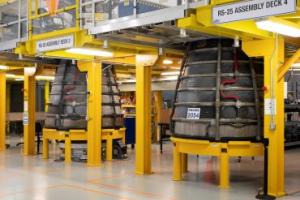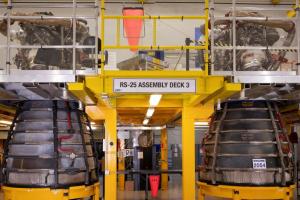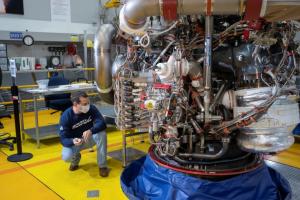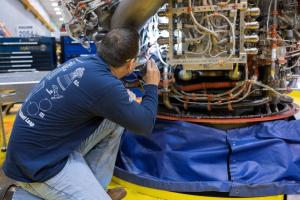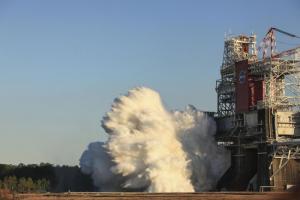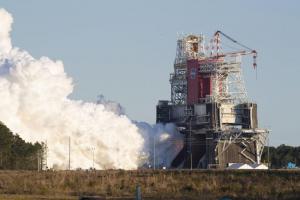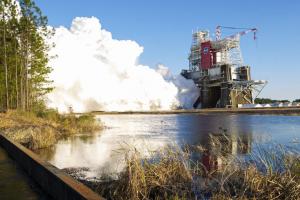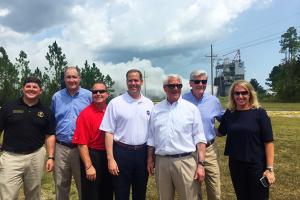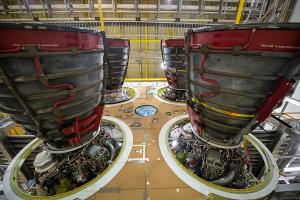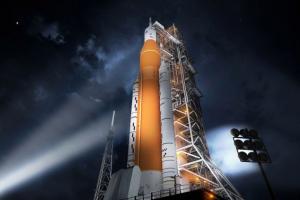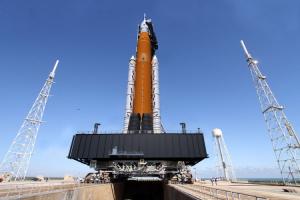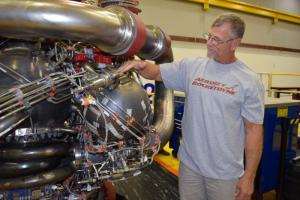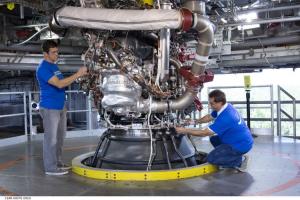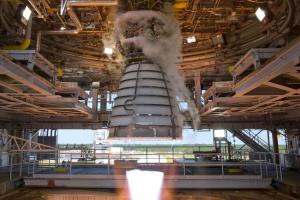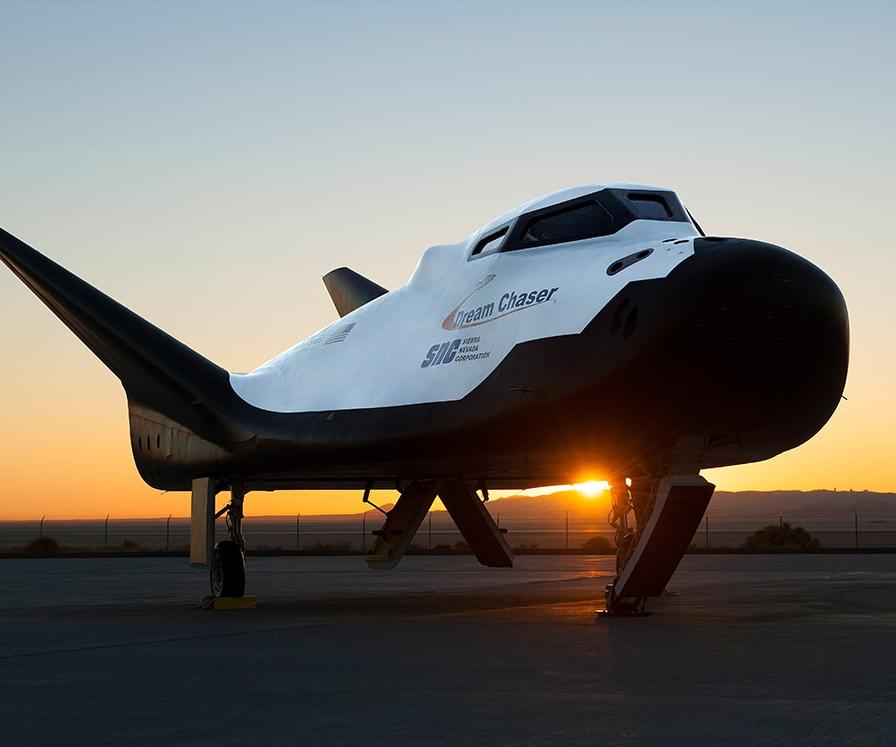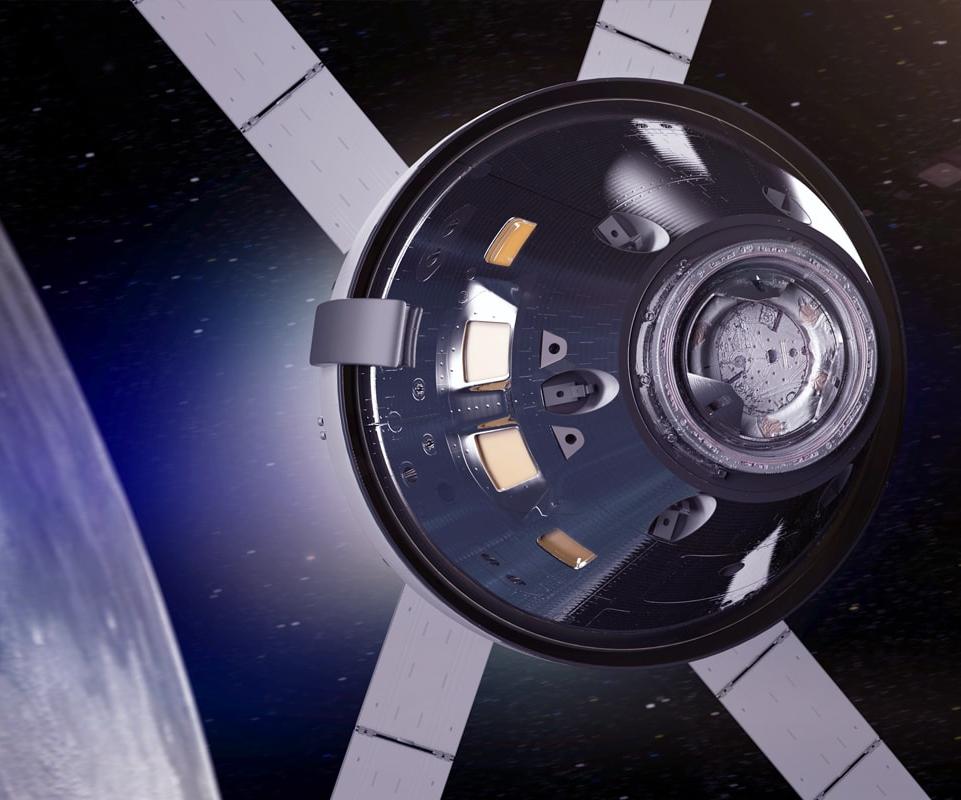Space Launch System
Powering NASA’s Space Launch System
NASA’s Space Launch System (SLS), America’s next-generation heavy-lift rocket, is powered by Aerojet Rocketdyne. Our propulsion plays a critical role in SLS’s ability to successfully launch the heaviest, largest, and most valuable payloads, including the Orion spacecraft, to deep space.

Key Features
Greatest Payload Mass: SLS’s increased payload capability results in fewer launches and less complex operations to place infrastructure in deep space. Fewer launches also means decreased risk and cost associated with these complex missions. For trips to Earth’s Moon, SLS’s first configuration is able to lift more than 27 metric tons (59,500 lbs) to the lunar vicinity. By its fourth configuration, the lift capability of SLS to the Moon will grow to 46 metric tons (about 101,400 lbs).
Largest Payload Volume: The capacity to launch the largest payload volume equates to the lowest mission complexity, risk and cost. It also allows for the greatest flexibility in the size and number of payloads that can be launched at once. More instruments and larger apertures can be accommodated by SLS, resulting in greater returns from the nation’s highest-priority science missions. At 8.4 meters, a future configuration of SLS (Block 1B) will have the largest fairing in the world.
Unmatched Speed: Faster speeds mean shorter duration trips and less exposure to harsh space environments for crew and cargo. It also means great scientific discoveries will return more quickly to Earth, and that costs will be reduced as a result of these accelerated timelines. SLS will carry crew and cargo to deep space faster and more efficiently than any other launch vehicle – enabling earlier arrival at destinations than by other means of in-space transportation.
Our Role
RS-25 Engines: The RS-25 is derived from the Space Shuttle Main Engine (SSME), which flawlessly powered 135 flights of the space shuttle. Between the shuttle and SLS programs, the RS-25 and SSME engines have experienced more than 1.1 million seconds of testing – making it the safest and most reliable liquid-booster engine in the world.
Four RS-25 engines are mounted to the bottom of the SLS rocket. In just 4 seconds, they reach over 2 million pounds of thrust and fire non-stop for 500 seconds to ensure SLS reaches space.
To do this, the RS-25 uses a staged-combustion engine cycle that combines liquid hydrogen and liquid oxygen propellants at a very high pressure to produce thrust. These engines operate in temperature extremes from minus 423 degrees Fahrenheit to 6,000 degrees Fahrenheit and at pressures exceeding 7,000 pounds per square inch. To fly SLS, the required power level for the RS-25 engines is 512,000 pounds vacuum thrust (109 percent of rated power level). Future evolutions will have even higher thrust capabilities.
RL10 Engines: Aerojet Rocketdyne’s RL10 engine powers the upper stage of the SLS, providing the main propulsion once the rocket has reached space. One RL10 engine was used on SLS when it made its inaugural flight on the Artemis I mission. On the second flight (Artemis II), the RL10 will provide the power to send the Orion spacecraft and astronauts on the first mission to the Moon with humans since 1972. As the SLS rocket evolves to even more powerful configurations, it will incorporate four RL10 engines on the Exploration Upper Stage.
For over 50 years, the RL10 engine has been the nation’s premier upper-stage rocket engine. To date, more than 500 RL10 engines have launched hundreds of satellites to orbit and have sent spacecraft to every planet in our solar system.
Videos
News Updates
- April 18, 2023 - Aerojet Rocketdyne Delivers Propulsion for Artemis III Mission
- Sept. 30, 2021 - Aerojet Rocketdyne Completes Successful Space Launch System Rocket Engine Test Series
- Aug. 18, 2021 - Aerojet Rocketdyne Expands Los Angeles Facility for NASA’s Moon and Mars Rocket
- March 18, 2021 - Successful SLS Core Stage Hot-Fire Test Puts America One Step Closer to Returning to the Moon
- March 18, 2021 - From the Test Stand to the Launch Pad: NASA’s First Space Launch System Core Stage Delivered to Kennedy Space Center
- Jan. 27, 2021 - Upcoming RS-25 Engine Test Series Will Demonstrate Lower Cost Rocket Engine Components for NASA’s Artemis Program
- December 2020 - Aerojet Rocketdyne RL10 Engines Set Stage for SLS Evolution
- September 2020 - Gearing Up for SLS Green Run’s Main Event
- July 20, 2020 - Aerojet Rocketdyne Completes its Propulsion for NASA’s Artemis II Mission
- Feb. 12, 2020 - NASA’s Artemis I Progresses Toward Launch

